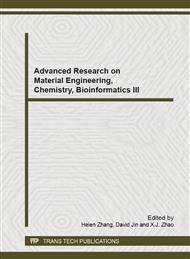p.435
p.439
p.444
p.448
p.455
p.459
p.463
p.469
p.473
Bioactivity Assay of Chitosan Microspheres Containing Pig Thymosin In Vitro
Abstract:
Thymosin, composed of many peptides, is distributed in animal and has immunomodulating effects. However, many factors could affect its bioactivity. Chitosan microspheres containing pig thymosin (CMPT) were prepared through W/O emulsion cross-linking method. In this study, thymosin activity between pig-thymosin and CMPT was investigated through E-rosette test and mouse spleen lymphocyte proliferation (MPLP) experiment in vitro. Results showed that CMPT has the same immunomodulatory activity as pig thymosin. When pig-thymosin was 1.5 μg / ml, E-rosette binding rate was 63%, and E-rosette binding rate of CMPT reached 60%。MPLP rate was 73.3% and 68.5%, respectively. CMPT have the capacity to keep the E-rosette binding and MPLP activity of pig thymosin. This may help to improve traditional formulation and bioavailability of thymosin, and expand its scope of application in clinic.
Info:
Periodical:
Pages:
455-458
Citation:
Online since:
October 2013
Authors:
Price:
Сopyright:
© 2014 Trans Tech Publications Ltd. All Rights Reserved
Share:
Citation:


